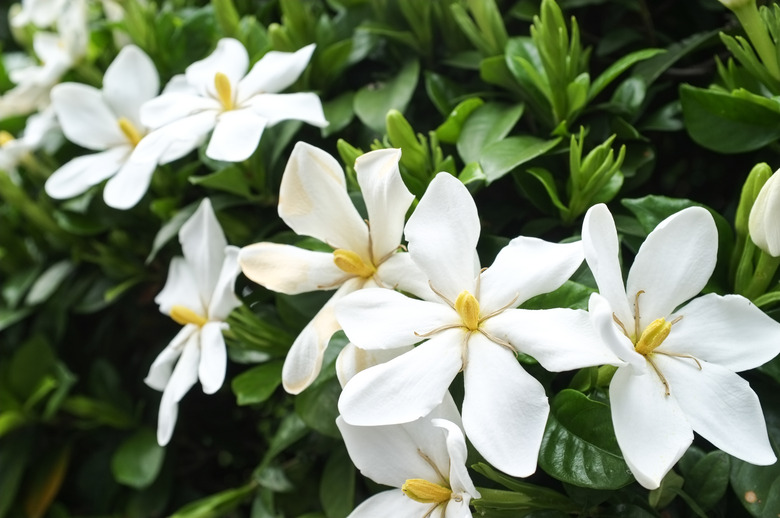How To Care For A Gardenia Tree
We may receive a commission on purchases made from links.
Gardenia, the most common being the cape jasmine (Gardenia jasminoides, USDA zones 7-11), is a type of flower that is known for its intoxicating smell and finicky growing preferences. Although plants may reach a height of 8 feet, they're actually shrubs and not trees. Caring for a gardenia can prove quite the challenge, but for any passionate gardener, the challenge of successfully growing a difficult plant is always part of the thrill. So what requirements are needed for growing a gardenia plant to its fullest potential?
Gardenia Sun and Water Needs
Gardenia Sun and Water Needs
Gardenia is native to tropical and subtropical climates, meaning this plant is a perennial only in the warm climates of USDA plant hardiness zones 7 through 11. These beautiful shrubs will thrive in full sun with some partial shade when the sun may be at its strongest. If left in the hot sun for too long the heat may burn the leaves or cause potential flower buds to burn up and fall off.
Morning sun is always best for gardenia plants. If you live in a geographical location that has intense afternoon heat, make sure to select an area with afternoon shade to protect the flowers and foliage. If the climate you are in is cooler, then it can thrive in the sun all day long if the roots are protected with mulch.
What makes gardenias a bit more difficult are their water requirements. They enjoy well-drained soil that remains constantly moist. They do not like to sit in water, but they do like moist soil, which can be accomplished with the help of mulch if you live in a very hot and sunny area. Plants need approximately an inch of water weekly, so occasional watering may be necessary during dry spells. It is important that the soil does not dry out between watering sessions, as this may affect your flower buds or even result in no flowers, and leaves may fall off the plant as well.
Gardenia Growing Conditions
Gardenia Growing Conditions
Gardenia shrubs need room for their roots to spread out, so if you are planting a gardenia outdoors in your garden, make sure the flower bed is not too crowded. It is best to grow the gardenia in a raised bed so that you can adjust its soil requirements as needed.
HGTV says the gardenia plant will grow its best if planted in acidic soil with a pH level between 5 and 6.5. It is also essential to make sure it has a humid environment, as it will thrive in this setting, and the humidity will also keep away bugs that tend to appear in dry growing conditions.
A great way to encourage flowers and healthy growth is by supplying your gardenia with fertilizer. It is best to do so in the spring and then once again in the middle of summer. Make sure it is a fertilizer specifically created for acid-loving plants, and follow all label recommendations.
Planning for Seasonal Changes
Planning for Seasonal Changes
What is beneficial about gardenias is that they can be grown outdoors and indoors alike. If you live in a geographical area with cold, harsh winters, it is best to plant your gardenia in a large pot, where it can be kept outdoors during the summer months and then brought in before the first frost during the autumn season.
The same conditions apply to indoor growing as outdoors, so make sure to provide a regular misting to the plant to keep it humid and happy with lots of bright light. If your winter temperatures do not drop below 15 degrees Fahrenheit, then you can simply protect the base of the plant for winter months and continue its care in the spring.
Pruning a Gardenia Plant
Pruning a Gardenia Plant
Pruning is not always needed for gardenia to grow naturally into a full shape, although you may need to remove scraggly, broken, or dead branches. Prune any spent flowers, which you'll recognize when they begin turning an unappealing brown color. Simply remove each faded flower with pruning shears to encourage the plant to focus its energy on developing new buds and healthy leaves. If you are pruning your gardenia buds, make sure to do so before August. Pruning in the later summer months and autumn will decrease the potential buds for the next blooming season.
